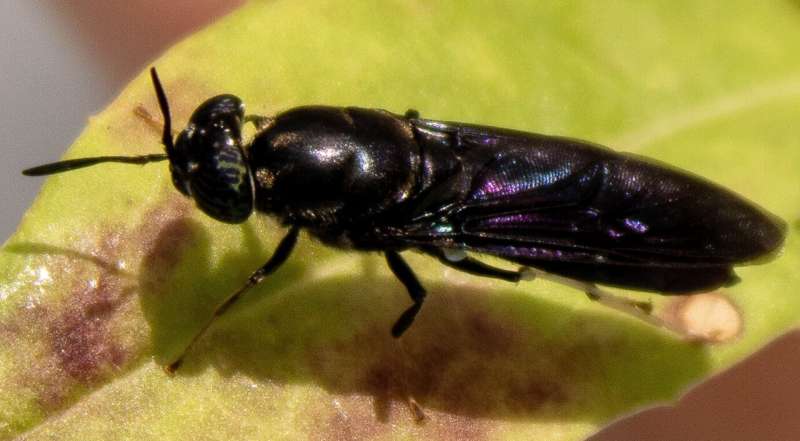
Imagine harnessing the potential of insects to create biodegradable plastics. This innovative concept is now becoming a reality as researchers make significant strides in isolating and purifying chemicals derived from insects to produce functional bioplastics. The progress of this groundbreaking project, led by Karen Wooley, Ph.D., is being presented at the fall meeting of the American Chemical Society (ACS).
“For the past two decades, our group has been dedicated to transforming natural products into degradable, digestible polymers that do not persist in the environment,” explains Karen Wooley. “However, these natural products are derived from resources that are also used for food, fuel, construction, and transportation.”
In order to find alternative sources that do not come into conflict with other industries, Wooley and her team began exploring the use of waste products from farming black soldier flies. These flies are increasingly being raised for animal feed and waste consumption. After the flies’ breeding days are over, their discarded carcasses became the new starting material for Wooley’s team. Cassidy Tibbetts, a graduate student working on the project, emphasizes the significance of this approach: “We’re taking something that’s literally considered garbage and transforming it into something valuable.”
Tibbetts discovered that chitin, a nontoxic and biodegradable polymer found in the exoskeleton of insects and crustaceans, was a major component in the black soldier fly carcasses. Traditionally, chitin is extracted from shrimp and crab shells, but Tibbetts’ technique provides a purer chitin powder. Furthermore, using chitin from flies can potentially address concerns related to seafood allergies. While other researchers have isolated chitin or proteins from fly larvae, Wooley’s team is the first to utilize chitin from discarded adult flies, which are not utilized for feed.
Alongside the purification process carried out by Tibbetts, graduate student Hongming Guo focuses on converting the purified fly chitin into chitosan, a similar polymer. By stripping off chitin’s acetyl groups, Guo exposes chemically reactive amino groups that can be functionalized and crosslinked. These steps allow the transformation of chitosan into useful bioplastics, such as superabsorbent hydrogels that can absorb 47 times their weight in water in just one minute. This hydrogel could be employed in agricultural settings to capture floodwater and release moisture during droughts, particularly relevant in regions like Texas that frequently experience extreme weather conditions. Additionally, the biodegradability of the hydrogel ensures the gradual release of nutrients for crops.
Looking ahead, the team plans to break down chitin into monomeric glucosamines, small sugar molecules that can be utilized to produce petrochemical-free bioplastics like polycarbonates and polyurethanes. The goal is for these products to degrade or digest upon disposal, contributing to the reduction of plastic pollution. Wooley envisions a sustainable, circular economy approach where insects consume waste plastics as their food source, and their components are harvested to create new plastics. “The insects would not only be the source, but they would also ‘consume’ the discarded plastics,” she explains.
More information: Harvesting of building blocks from insect feedstocks for transformation into carbohydrate-derived superabsorbent hydrogels, ACS Fall 2023. www.acs.org/meetings/acs-meetings/fall-2023.html
Citation: Transforming flies into degradable plastics (2023, August 14) retrieved 14 August 2023 from https://phys.org/news/2023-08-flies-degradable-plastics.html
This document is subject to copyright. Apart from any fair dealing for the purpose of private study or research, no part may be reproduced without written permission. The content is provided for information purposes only.
Denial of responsibility! TechCodex is an automatic aggregator of the all world’s media. In each content, the hyperlink to the primary source is specified. All trademarks belong to their rightful owners, and all materials to their authors. For any complaint, please reach us at – [email protected]. We will take necessary action within 24 hours.

Jessica Irvine is a tech enthusiast specializing in gadgets. From smart home devices to cutting-edge electronics, Jessica explores the world of consumer tech, offering readers comprehensive reviews, hands-on experiences, and expert insights into the coolest and most innovative gadgets on the market.


